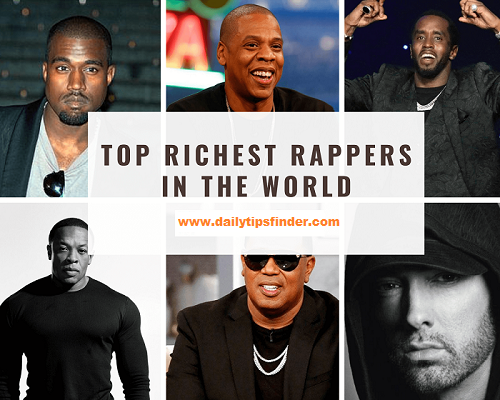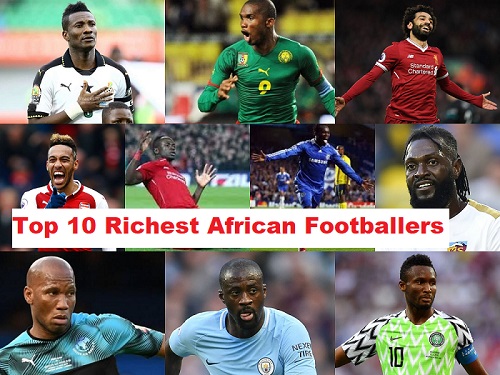Top 10 Richest Countries In Africa. Want Information On The Richest Countries In Africa? Get It In This Post.

No doubt, you have wondered at least once in your life what the richest country in Africa is like. Great news is, i have brought this information to you to enlighten you more on matter arising. If you are interested in knowing the top richest countries in Africa then you have come to the right place for this information. Here is a run down of the top 10 richest countries in Africa:
- Nigeria
- South Africa
- Egypt
- Algeria
- Morocco
- Kenya
- Angola
- Ethiopia
- Ghana
- Tanzania
Top 10 Richest Countries In Africa
1. Nigeria ($446,543 Billion)
A key part of the African economy, Nigeria has a populace adding up to half of West Africa (a little more than 202 million). With a plenitude of characteristic assets, it remains Africa’s main maker as far as GDP yield. With a plenitude of common assets, Nigeria remains Africa’s main maker regarding GDP yield.
The nation is Africa’s biggest unrefined petroleum exporter, recording creation around 1,6 million barrels per day in December of 2019. Oil sends out record for 10% of GDP and surpass 80% of fare income. Aside from oil, Nigeria’s other common assets incorporate gaseous petrol, tin, iron metal, coal, limestone, niobium, lead, zinc and arable land.
Read Also: Top 10 Most Beautiful Cities In Nigeria
2. South Africa ($358,839 Billion)
South Africa clutches the subsequent spot, after a troublesome second 50% of 2019. South Africa went into a downturn after 2 back to back quarters of negative GDP development. The fundamental explanation, among others, power blackouts from maturing tasks at its principle power maker, Eskom.
South Africa has broadened its contribution in the course of recent decades from for the most part crude material fares, for example, gold, iron metal and platinum bunch metals, to monetary administrations and assembling. Budgetary administrations, mining and individual administrations were the main businesses to post positive development in the fourth quarter, be that as it may, fourth quarter development finished at – 1,4%. South Africa just developed its GDP by 0,2% in 2019.
With the whole worldwide economy encountering a log jam, and its fundamental iron mineral exchange accomplice, China, shutting production lines and moderate development, South Africa could confront a troublesome street ahead. Covid-19 will have a significant part to play in South African development, not just stifling businesses, for example, the travel industry and travel, yet in addition mining and individual administrations.
3. Egypt ($302,256 Billion)
The Government of Egypt as of late finished up a monetary change program supported by the IMF so as to reinforce financial development. Genuine GDP development arrived at 5,6% in 2019, up from 5,3% in 2018. Joblessness has additionally tumbled to 7.5% in the fourth quarter, from 9.9% per year prior. By area, gas extractives, the travel industry, discount and retail exchange, land and development have been the primary drivers of development.
With over half of GDP being gotten from administration based work, Egypt has done well to enhance itself from crude material fares. In any case, with 32,5% of the populace living underneath the neediness line and the up and coming worldwide lull, Egypt could confront some financial headwinds in the years to come.
4. Algeria ($172,781 Billion)
Algeria is a nation profoundly presented to the presentation of hydrocarbons, including oil and gaseous petrol. Actually, hydrocarbons make up about 70% of all out GDP. Notwithstanding, in mid-2019, numerous high positioning officials in the hydrocarbon business were confined on examinations of defilement. This political vulnerability has hindered hydrocarbon development, with development in the division shrinking by 7%.
By part, business administrations, mechanical, development and open works, and farming divisions keep on driving non-hydrocarbon development, arriving at 5.6%, 4.6%, 3% and 2.7% in Q1-2019, separately. Be that as it may, in an economy so profoundly corresponded to oil and petroleum gas costs, the current war in oil creation could impactsly affect its economy.
Read Also: Top 10 Richest Athletes In The World (Latest Ranking)
5. Morocco ($119,04 Billion)
Moroccan genuine GDP development eased back to 2.7% in 2019, missing the World Banks’ gauge of 2.9%. Morocco determines just shy of 15% of its GDP from horticulture, 30% from industry and the rest of administrations. Household request stays solid with normal compensation increments outpacing the low expansion of 0.6%.
Before notice of Covid-19, the World Bank assessed a normal development pace of 3.3% for 2020/21 because of expanded interest in the Moroccan car industry. One such venture was made in their Peugeot plant which wants to twofold creation limit.
6. Kenya ($98,607 Billion)
Kenya, one of the fastest developing economies in Sub-Saharan Africa, arrived at the midpoint of GDP development of 5.7% in 2019. The ongoing monetary development has been supported by a stable macroeconomic condition, positive financial specialist certainty and a strong administrations segment.
In spite of the fact that Kenya has encountered quick development in both innovation and money related administrations, their absolute yield despite everything remains vigorously slanted to farming produce (roughly 35% of GDP) including espresso, tea and corn. It’s modern division despite everything has space for development while its administrations segment ranges between 45 – half of GDP. They profit by expanded worldwide venture, a stable political atmosphere and a reasonable business plan.
7. Angola ($91,527 Billion)
From the finish of the Angolan Civil War in 2002, Angola has been taking a shot at political and auxiliary changes so as to settle its economy. There is no uncertainty this is an economy based on oil, with in excess of a third GDP and 90% of its fare income got from raw petroleum deals.
Angola is at present actualizing change programs from both the IMF and World Bank who have swore $3.7 Billion and $500 Million to the Angolan government individually. Until the nation can expand from oil reliance, most of its populace will stay beneath the neediness line and development will be troublesome. That being stated, the Angolan government has come a far route since its common war and ought to stay a competitor for solid African development.
8. Ethiopia ($91,166 Billion)
Ethiopia’s Prime Minister, Abiy Ahmed, who got down to business in 2018, has propelled a goal-oriented monetary change which will intend to drive financial change and open up one of Africa’s most shut economies. The procedure has just started for the privatization of segments, for example, broadcast communications, banking and sugar estates.
Ethiopia’s monetary development has arrived at the midpoint of 9.9% year-on-year from 2008 to 2018 and gives no indications of surrendering. It does, in any case, experience the ill effects of solid headwinds of high shopper swelling and immature private segment and socio-political flimsiness. It will be a long and troublesome street, however in the event that the legislature can give great authority and capital designation, Ethiopia could turn into the new assembling center of Africa.
9. Ghana ($67,077 Billion)
Ghana essentially sends out assets, for example, cocoa, unrefined petroleum, gold and lumber. The nation encountered a financial development of 6.7% in the first quarter of 2019, with non-oil development at 6%. Swelling stays in the single digits at around 9% and the financial part is very much promoted.
Ghana’s vitality segment stays under money related tension because of significant expenses and gaseous petrol gracefully. With a political race cycle amidst an oil value war and Covid-19, 2020 will be a trial of what development will be found in Ghana.
Read Also: Top 10 Richest Women In The United States (Latest Ranking)
10. Tanzania ($62,224 Billion)
Tanzania underpins a populace of around 55 million individuals. Despite the fact that the neediness rate has diminished over the most recent couple of years, irrefutably the quantity of residents in destitution has continued as before. The assessed GDP development rate was 5.6% for 2019 because of high government interest in another rail line, the restoration of the bombed state aircraft and another hydropower plant.
We Believe This Article Was Helpful, Don’t Hesitate To Share This Information With Your Friends On Facebook, Twitter, Whatsapp and Google plus.
Copyright Warning: Contents on this website may not be republished, reproduced, redistributed either in whole or in part without due permission or acknowledgement. All contents are protected by DMCA.
The content on this site is posted with good intentions. If you own this content & believe your copyright was violated or infringed, make sure you contact us via This Means to file a complaint & actions will be taken immediately.



